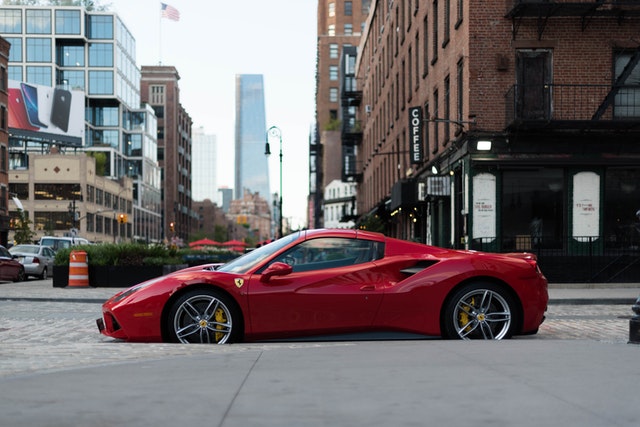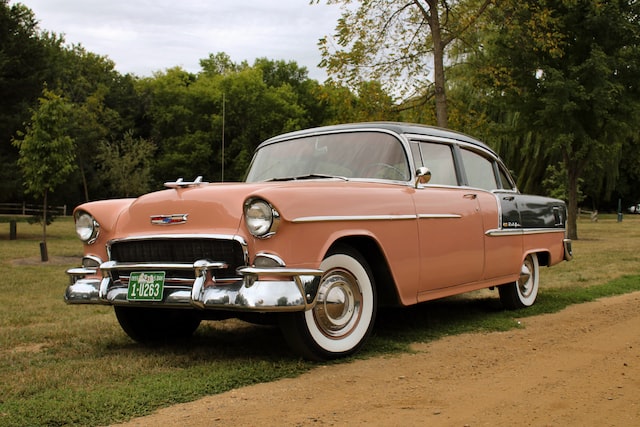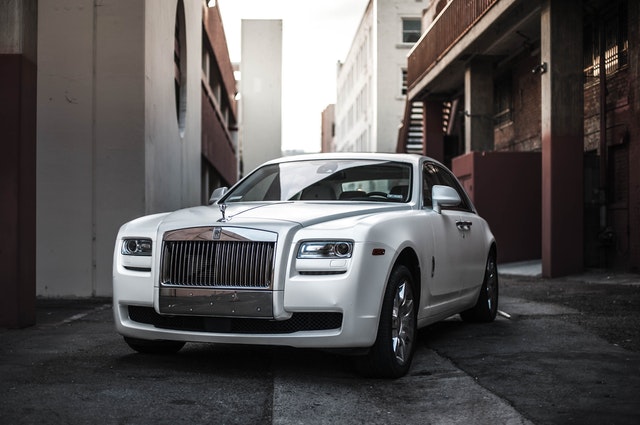Parking in between two other vehicles can be challenging for many drivers, especially new drivers. Sometimes, the parking space is small and the surrounding traffic is crowded, making parking even more difficult. Of course, each person who takes the driver’s license test must complete these parking cases well in order to receive a driver’s license and be able to drive on the road. So, how to park a car and how to park between two cars? This article aims to highlight and summarize the secrets to parking in a space on a case-by-case basis.
Tips for finding a suitable parking space
For the purpose of finding a suitable parking space, first, ensure that the cars stopped on either side of the open stopping space are adjusted inside their claim parks and not arranged near the border of the open space. If you decide to stop in an open stopping part at night, attempt to discover a stopping space that’s in near vicinity to light for included security.
In the event that stopping within the stopping part of a retail store, attempt to find an open stopping space that’s absent from shopping cart collectors or bunches of unattended shopping carts. This will offer assistance to avoid your vehicle from being harmed whereas stopped in a stopping space.
Despite the fact that comfort is imperative, stopping halfway down a passageway of parking spaces is regularly better than stopping in a space near the starting of a path. Your vehicle will be less likely to be completely encompassed by other vehicles and there will be less activity after you enter as well as exit the space.
How to park in a parking lot?

Parking is always considered a big challenge for new drivers. There are 3 adjustment situations when parking the car: back-in angle parking, perpendicular parking, and parallel parking. This article will summarize practical parking methods for each type of situation.
- Perpendicular parking
Perpendicular parking is one of the easiest ways to park because the driver can control the space in front and on the sides easily. In this parking post, the driver needs to pay attention to which side wants to park, then extend the steering wheel to the opposite side. For example, if you park to the right, then widen the drive to the left and then enter. Depending on the short length of the car, choose the right time to turn the steering wheel.
In this case, you should consider where there is a wider horizontal gap than the width of the vehicle and enough room in the front. The driver can directly get off the vehicle to observe the surrounding conditions before starting the operation.
Then you need to drive parallel to the edge of the road (about 20-30 cm away) close to the wall of the spot. At this time, you need to check the right rearview mirror (which side the spot is on, look at the mirror on that side). When you see the edge connecting the two-door handles of the car about 30-40 cm from the top edge of the spot, stop, return the steering wheel and proceed to reverse the car.
At the same time, it is necessary to constantly observe the rearview mirror to determine the position of the rear wheel, when the rear wheel touches the spot door, stop, turn the steering wheel to the right, and back in.
- Back-in angle parking
For the purpose of completing back-in angle parking, it is necessary to determine the parking location first. Drivers should prioritize locations with few cars around to easily put the car in the parking space. Then you need to get the car to the correct position, away from other cars and at a suitable distance from the parking space so that you can turn the steering wheel correctly. The minimum distance between vehicles should be 1.5 – 1.8 m.
If you’re driving a medium-sized vehicle, the bottom outside edge of the rearview mirror hitting the spot edge first is when you should steer in. In the case of a longer vehicle, steer earlier. After entering the spot, return the steering wheel and align the front of the car close to the edge, then stop.
- Parallel parking
This is one of the most difficult parking techniques for drivers, it takes practice many times if you want to master it. As a general rule, the parking space should be equal to the length of the vehicle plus about 1.5 m (75 cm at each end). The estimate of the clearance when reversing in parallel includes the length of the vehicle plus the space of more than half a meter (about 60cm) at both the front and rear of the vehicle.
Proceed to parallel parking 60-90 cm from the front vehicle. Turn the steering wheel completely, reverse the car until it is tilted at a 45-degree angle or the driver can see the entire front of the car behind in the mirror or the front license plate is in the middle of the side window. When you see the above signs, return the steering wheel, back up a bit, and then turn the steering wheel to the opposite side to put the car in place. You can move forward and backward a few times to keep the car in the neatest position.
The driver should stop higher than the vehicle in front, then reverse straight back until the taillights of the front vehicle enter the rear window frame. If you see that the taillights have come to the correct position according to your vehicle’s size, turn the steering wheel to the right firm and continue to reverse.
If you see the taillights of the front car touching the edge of the front door (with a short car) or the number plate touching the edge of the front door, turn left and reverse the car into the spot. After the body of the car is parallel to the spot, return the steering wheel, align the distance with the front / rear car reasonably so that all 3 cars have enough space to manage when they need to move.
Some common mistakes of car parking
- Driving in the opposite direction
Beginners often steer in the opposite direction, for example, when they want the rear of the car to shift to the left, they turn the steering wheel to the right (clockwise). The right rule to remember is: if you want the rear of the car to shift to which side, steer to that side. Leaving the throttle high, the car reverses quickly, so the steering is not timely, the car is not going in the desired direction. Therefore, when you are not proficient, it is best to reverse at a slow speed, by not matching the clutch pedal or brake.
- Wrong estimate of vehicle distance and position
The wrong estimate of the distance and position of the vehicle, for example, you think the car has entered the middle of the barn but it is still diagonally, or too skewed to one side. Therefore, at first, after each reverse, you should step out of the car and look at the actual position of the car compared to your imagination, then evaluate and learn from the experience for the next time.
- Lack of observation
This is easy to cause a collision because the nose of the car tends to fly out when steering, or when an unexpected obstacle appears ahead. Just like the car moving forward, you still need to occasionally observe the rearview mirror to ensure safety. When reversing, it is even more important to look around, because visibility is much more limited.
- Parking close to the side of the sidewalk
On crowded and narrow roads, many drivers choose to park their cars close to the sidewalk to avoid being hit. Parking too close to the sidewalk inadvertently causes the tires to rub against the pavement, causing damage, the tires will be worn and thin… this is a potential cause of car tire explosion when the vehicle moves on the road.
- Park halfway on the sidewalk
This mistake most drivers often make when parking. If this phenomenon is repeated many times, it will lead to swollen tires. When half of the wheel is put on the sidewalk, the pressure on the tire is uneven, causing the tire to deform. The places where the tire is swollen will be very thin, reduce its elasticity, easily cut by sharp objects on the road, causing tire damage.
- Open the car door arbitrarily
The principle of observing before and after opening the car door is well known. But in fact, there are many unfortunate accidents that have happened to cyclists and motorbikes because the occupants of the vehicle suddenly opened the door. To overcome this silly mistake, in many countries there is an extra small strip on the road, drawing diagonal lines to prevent other vehicles from entering to save space when opening the car door.
- Forget to pull the handbrake
Forgetting to pull the handbrake when parking poses a potential risk of causing an accident to other traffic participants when the vehicle rushes out onto the road at high speed without warning. Therefore, when parking, especially on steep terrain, the driver needs to make sure the handbrake is applied before stepping out of the vehicle.
- Park your car in the sun for a long time
Drivers should pay attention to the dangers of parking in the sun. According to health experts, the temperature in the cabin greatly affects living things, including humans. In which, children are the fastest and most affected subjects. Children’s temperature rises 5 times faster than adults. Therefore, you should remember not to leave children in the car parked in the sun for too long.
How to avoid this? It is best not to park the car in direct sunlight. If required, you can use a tarpaulin. Another solution is to use internal visors.
- Do not turn off the lights and pull the glasses
Forgetting to turn off the headlights until the battery runs out or not pulling the windows all the way up when leaving the car overnight are the most likely situations when parking. This may seem strange to vehicles equipped with automatic headlights because the lights turn off when the engine is turned off. However, for some vehicles, the headlights are still on. As a result, the battery runs out of charge. The solution is that you should form a habit of turning off the lights, pulling the windows when parking. You can take a walk around the car to check if the exterior is like the windshield or not, the headlights are bright or not, there are obstacles around…
What is the penalty for illegal parking?

Traffic fines in the US or some European countries are very heavy, not all people agree. However, the punishment for paying fines is very strict, so violators can only pay fines and try to avoid breaking the law.
In the United States, there is always an army that patrols the streets to punish parking errors. The first time the car is discovered, the car parked overtime can be fined 50 USD or 100 USD. However, after a while, the car is still there, the owner can receive a double ticket. In addition, the vehicle will be towed to the parking lot. All expenses must be paid by the car owner.
In addition to the patrol force, the traffic cameras are scattered throughout the intersections, and on the new roads are the “invisible traffic police” who give the most fines. They handle all errors, such as: running a red light, stopping, speeding… Photographs and tickets will be sent to the home where the vehicle is registered.
The fine is very high, but paying fines in the US is extremely convenient. Right after the ticket is a guide on how to pay the fine. The owner of the car can go to a certain location to pay, can mail a check, or it can take only a minute to pay online.
In general, each state will have a penalty for illegal parking. In general, however, the penalty is quite severe, and most people will be fined (no exceptions).
Above is all the related information about “How to park a car? and“How to park between two cars?”. Hope this piece of information can help you in practical driving.
If you want to get more information about road rules, visit our website and try our free DMV practice test, or download it for your IOS or Android devices now!

UT Utah License Renewal: A 2025 Comprehensive Guide
Discover the ultimate guide to Utah license renewal! This comprehensive guide delves into the intricacies of renewing your driver's license in Utah,...
February 13, 2023

South Carolina S.C. Driver's License Renewal
The South Carolina S.C. driver's license renewal process is designed to be comprehensive, taking into consideration eligibility requirements, renewal methods,...
February 13, 2023

Pennsylvania PA DMV License Renewal: A 2025 Full Guide
The Pennsylvania PA DMV license renewal process is designed to be comprehensive, taking into consideration eligibility requirements, renewal methods,...
February 10, 2023

